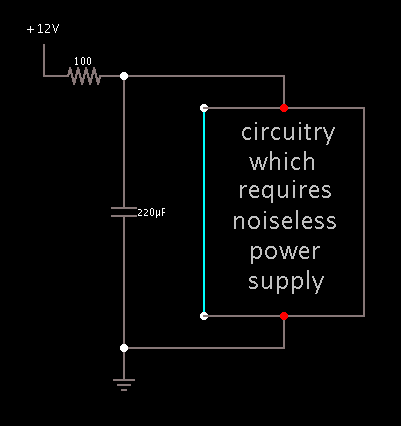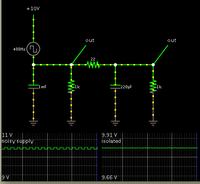DanielB33
Newbie level 3
I was told to add a RC filter in front of my op amp by my boss, I originally just had a capacitor at the power input. I do not understand the significant difference between having the resistance and not. If I have a low pass filter, from my point of view all it does is make sure that ripples or noise from my supply does not cause the capacitor to supply to power supply with current rather than the op amp. How does the resistor make a difference and what differenceS does the R make???
ALSO, I understand that adding impedance to the low impedance power input...well, adds impedance. But How does adding this resistor/impedance with the cap cause noise reduction?
For me to really understand this, I need to be able to visualize the differences between the following:
what will happen if I only use a capacitor at the input verses
what will happen if only use a resistor verses
what will happen if I use a rc filter configuration
Thanks much for you help.
ALSO, I understand that adding impedance to the low impedance power input...well, adds impedance. But How does adding this resistor/impedance with the cap cause noise reduction?
For me to really understand this, I need to be able to visualize the differences between the following:
what will happen if I only use a capacitor at the input verses
what will happen if only use a resistor verses
what will happen if I use a rc filter configuration
Thanks much for you help.

